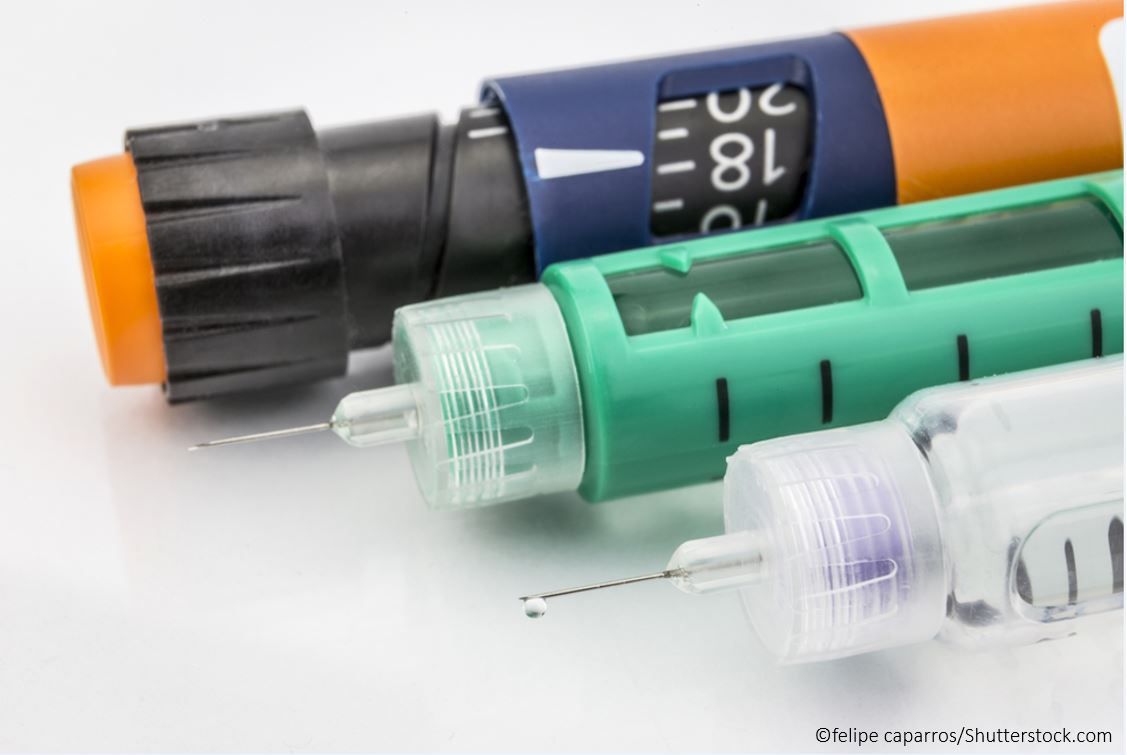- Clinical Technology
- Adult Immunization
- Hepatology
- Pediatric Immunization
- Screening
- Psychiatry
- Allergy
- Women's Health
- Cardiology
- Pediatrics
- Dermatology
- Endocrinology
- Pain Management
- Gastroenterology
- Infectious Disease
- Obesity Medicine
- Rheumatology
- Nephrology
- Neurology
- Pulmonology
Insulin Prescription Fills Up Following Inflation Reduction Act Cap on Out-of-Pocket Costs
The new policy is helping people who are taking insulin save money and helping others to afford it in the first place, says a study coauthor from the USC Sol Price School of Public Policy .
Policy enacted in the recently-passed Inflation Reduction Act (IRA) that caps out-of-pocket costs for insulin at $35 for a month’s supply has led to increases in the total number of insulin prescriptions filled for Medicare beneficiaries, according to a study published in JAMA.1
©felipe capparos/Shutterstock.com

The results of the study, conducted by the USC Schaeffer Center for Health Policy and Economics and the University of Wisconsin-Madison, showed that the number of insulin fills among Medicare Part D enrollees increased from 519 588 to 523 564 per month following the introduction of the cap in January 2023.
This contrasts to the number of insulin fills among those who aren’t enrolled in Medicare Part D, which decreased from 344 719 to 330 229 per month over the same period, the results of the study indicated.
“Our analysis suggests that this policy meaningfully reduced the number of Medicare beneficiaries who were not filling their insulin because of the cost–which would have potentially put their health at risk,” said Rebecca Myerson, PhD, MPH, lead author of the study and assistant professor of population health sciences at the University of Wisconsin School of Medicine and Public Health, in a press release.2
FINDINGS
Investigators used data from IQVIA’s National Prescription Audit to examine the cap’s effectiveness. The audit includes 92% of retail pharmacies and 70% of mail-order and long-term care facility pharmacies, and the total study sample included 14 million insulin fills.
The study authors compared the changes in insulin fills for Medicare Part D enrollees aged 65 to 74 years with changes among 60- to 64-year-olds who did not have Medicare insurance. Additionally, the authors compared outcomes before (September through December 2022) and after (January through April 2023) the IRA’s insulin cap took effect.
Furthermore, the average number of monthly prescription fills with out-of-pocket expenses of $35 or less grew from 340,509 to 366,928 among Medicare enrollees. This is in comparison to those who don’t have Medicare, for whom less expensive fills fell from 242 733 to 220 867, the results of the study showed.
After the investigators adjusted for differences in the study sample, their analysis found that Medicare beneficiaries filled approximately 50 000 more insulin prescriptions per month that were $35 or less. Notably, approximately 20 000 of those prescription fills would not have taken place if the IRA’s insulin policy was never implemented.
Insulin backstory
The price of insulin has been a flashpoint around the country due to skyrocketing costs over more than a decade. Out-of-pocket costs for insulin were $236 million in 2007, but ballooned to more than $1 billion in 2020, the study authors noted.
This has led to many patients with diabetes having to ration insulin, which can increase the risk of poor health outcomes.
Starting in January 2023, all Medicare Part D beneficiaries’ out-of-pocket costs for insulin were capped at $35 for a month’s supply. The findings of this study suggest that the newly implemented cap and resulting low costs are encouraging more patients to fill their insulin prescriptions, according to the authors.
“Many Americans are concerned with the cost of insulin because people with diabetes are at great risk of serious health problems, including nerve damage, heart attack and stroke. This new policy has the potential to do two things: save money for people who are taking insulin, and help people afford insulin to begin with,” said John A Romley, PhD, co-author of the study and associate professor at the USC Sol Price School of Public Policy and Alfred E. Mann School of Pharmacy and Pharmaceutical Sciences.
